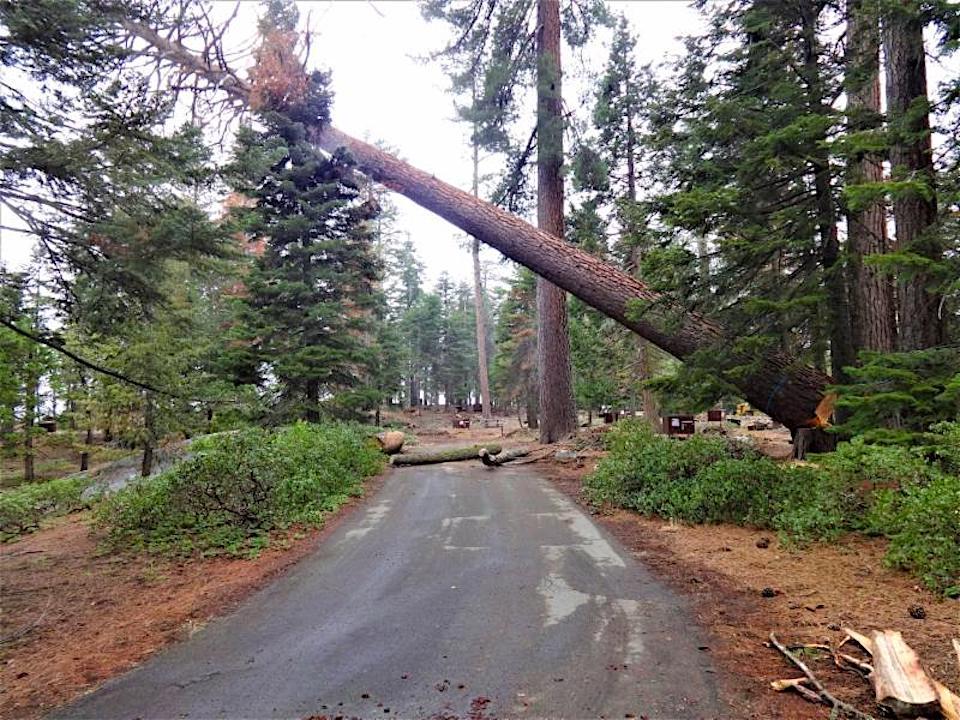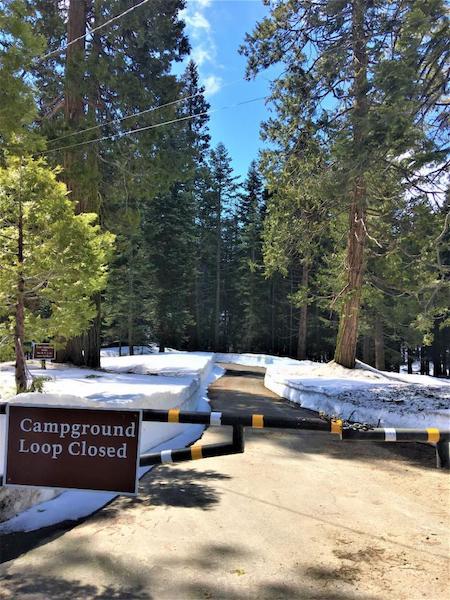
Hazard trees have to be cleared before campgrounds can open/NPS
Though a winter heavy with snow means lots of blooming wildflowers in Sequoia and Kings Canyon national parks in California, it also means there aren't a lot of campsites to pitch your tent in yet and rivers are running full, cold, and dangerous.
According to park staff, wildflowers are blooming and temperatures are rising in the Foothills area of Sequoia National Park, but as you drive up into the Giant Forest and Grant Grove you can expect to see snow and feel the temperatures drop. If you had plans to camp, you’ll also notice that campgrounds like Lodgepole or Azalea, both of which would typically be open this time of year, are currently closed due to hazard trees and late season snow.
Campgrounds
Campgrounds in all areas of the parks are affected by hazard trees, which are defined as trees that have a structural defect that makes them likely to fail in whole or in part, posing a threat to anyone in the vicinity. Years of drought have generated more than 5,600 dead trees near campsites, roads, and buildings. Out of nearly 1,200 campsites in the parks, only about 300 are expected to be open by Memorial Day weekend. In an effort to get campgrounds opened as quickly as possible, tree crews will be leaving the wood behind to gather or burn at a later time. Visitors are welcome to use this wood for campfires, unless fire restrictions are in place.
The only open campgrounds in the parks are Potwisha, Buckeye Flat, and South Fork in the Sequoia foothills. All other campgrounds are closed at this time. A new park webpage has been developed to help with trip planning that reflects the most current information on new estimated open dates. Check here regularly for ongoing campground updates: www.nps.gov/seki/campground-opening-schedule.htm
Most campgrounds require advance reservations through www.Recreation.gov.
Visitors with campground reservations will be notified of any possible cancellations at least two weeks in advance. Be advised that campsites are limited and will fill up quickly. The only place to check whether walk-up sites are still available is the Campground Information Boards located near the entrance of each campground. There you will find a list of any available sites along with registration procedures. For additional camping and lodging options near our parks, visit www.nps.gov/seki/planyourvisit/eatingsleeping.htm.

Winter's heavy snowfalls mean many campgrounds won't open before Memorial Day/NPS
River Safety
Snow surveys show that sites within the parks have approximately 141 percent of the April 1 average water content. This means that as snow melts, rivers in the two parks will become dangerously swift with rushing cold water. At lower elevations the rivers can seem appealing on a hot spring day, but the park urges visitors to enjoy areas of the parks that are away from the rivers.
“Many drownings in the park happen when people walking along the river’s edge slip and fall in,” Chief Ranger Ned Kelleher said. “Please use extreme caution while near the river, avoid slick rocks, unstable banks and areas where you could accidentally fall in.”
Getting in the river or going near it could create a life or death situation. Snow melt is causing creeks and rivers to rise. Even the best swimmers can find themselves in a difficult situation under the current water conditions.
Wilderness Travel
As you plan your early spring trips into the parks’ wilderness, think about how the large snow pack may affect your plans. Some things to expect: challenging route finding, steep snowfields on passes and swift creek crossings. Warmer temperatures are also causing snow to melt and creeks are running high. Avoid walking on areas of unsupported snow (snow bridges); these are often over creeks and rivers and are very unstable. When these collapse, anyone standing on them can be swept away and drown. Observe conditions carefully and then evaluate the risk of crossing. Be prepared to turn back.
Wildlife
It is very important that visitors store food properly and not approach bears of any size. Bears can grab unattended food or easily break into cars. They become bold and sometimes aggressive in attempts to get more. All food or anything with a scent must be stored out of sight in the trunk of a vehicle or a food storage locker, and trash must be disposed of in bear-resistant cans and dumpsters.
In an effort to protect Peregrine nesting, a section of the east face of Moro Rock is closed to rock-climbing from April 1 to August 15, between and including The Couch Trip and Full Metal Jacket routes.



Add comment